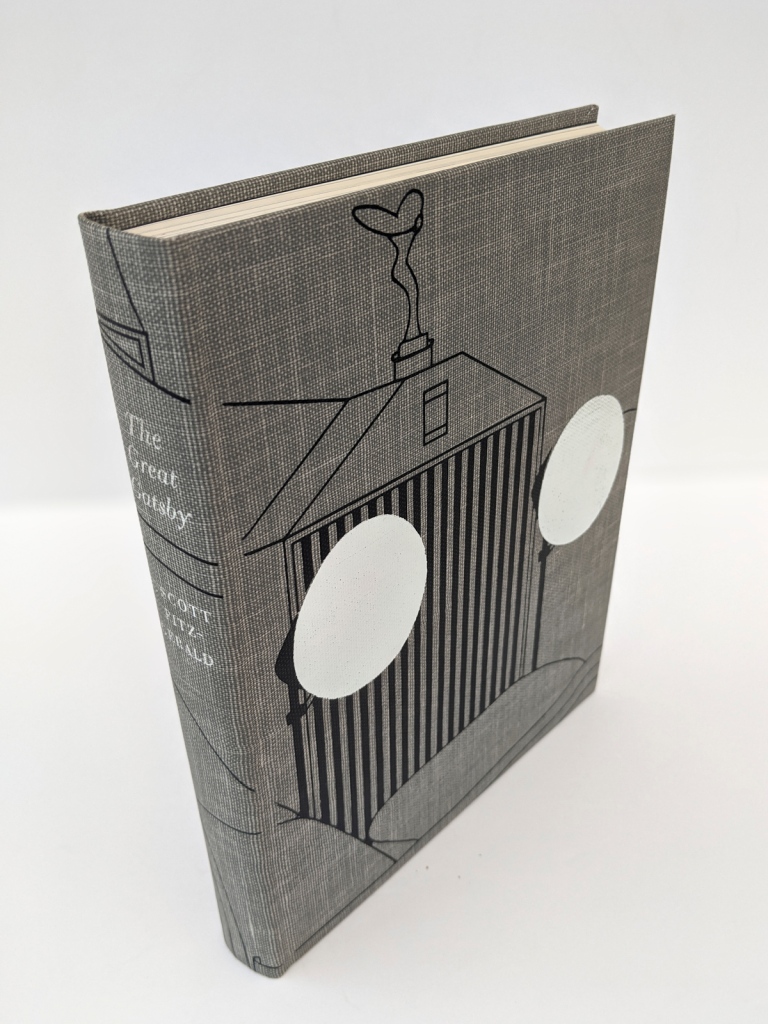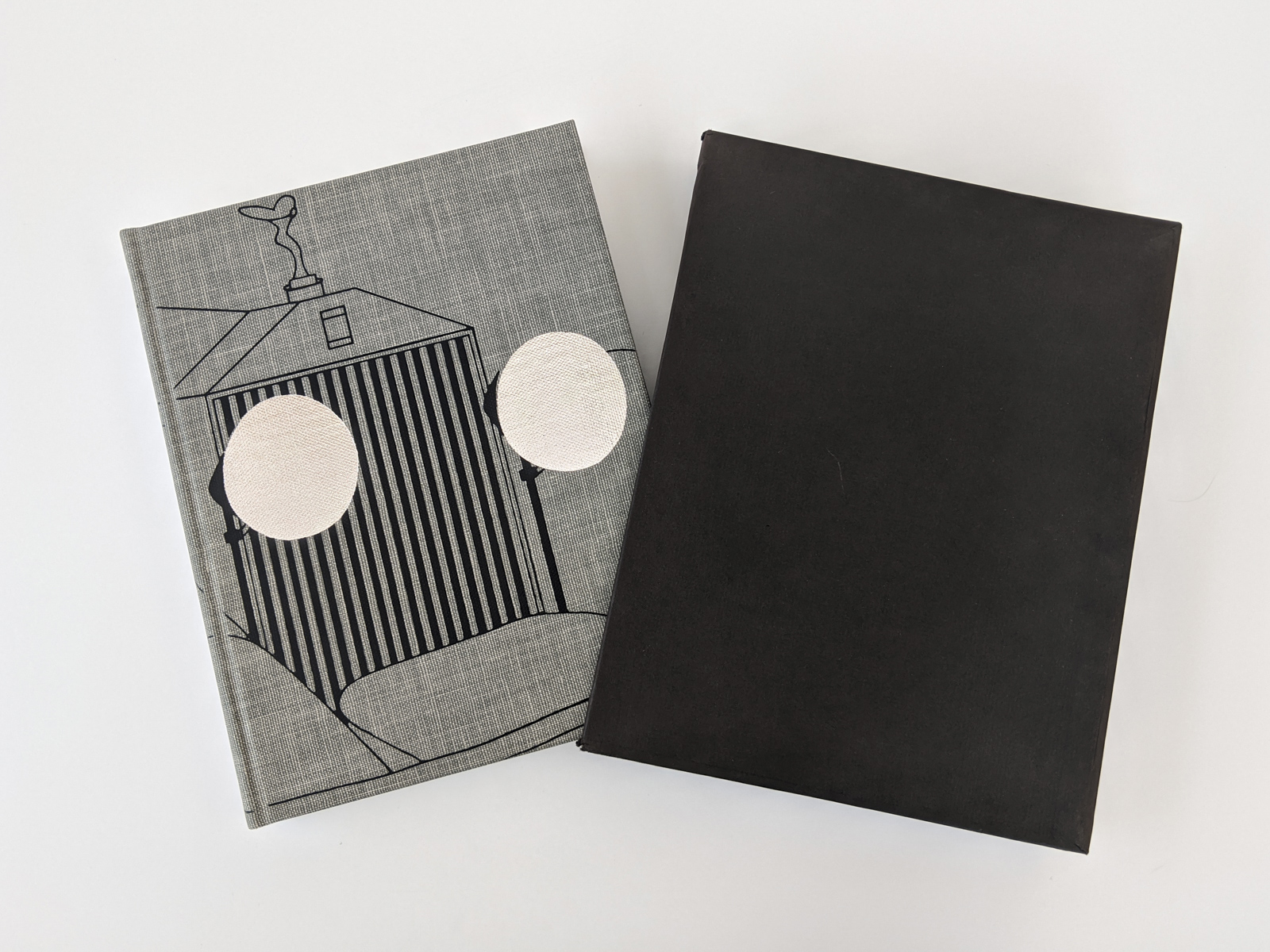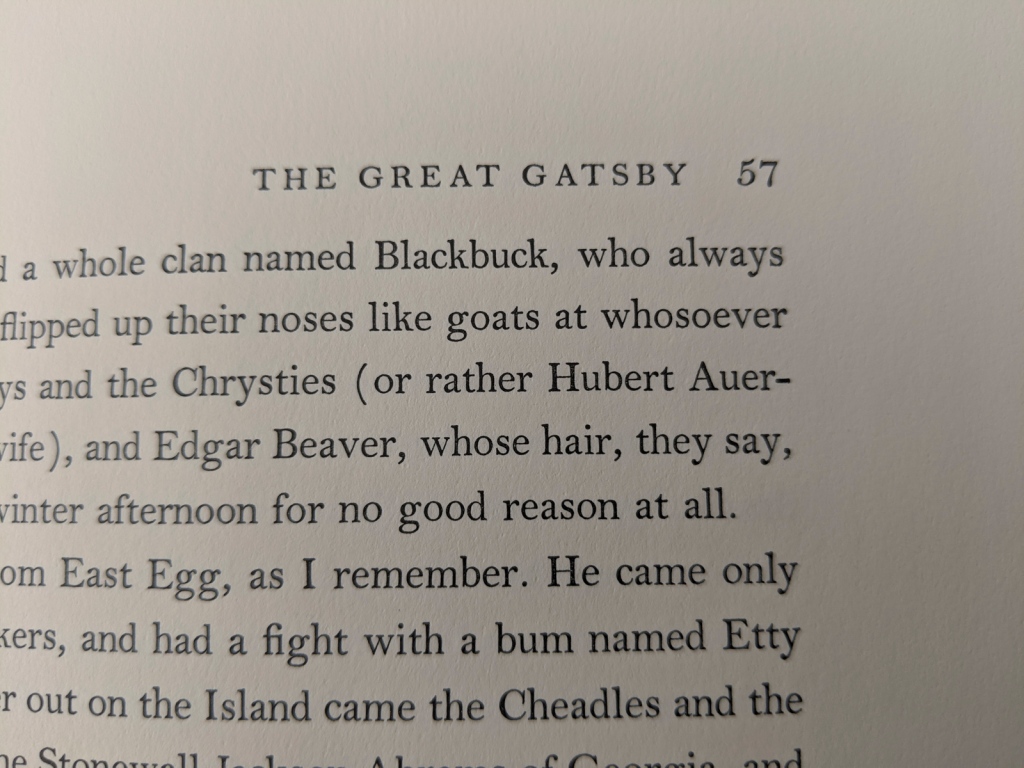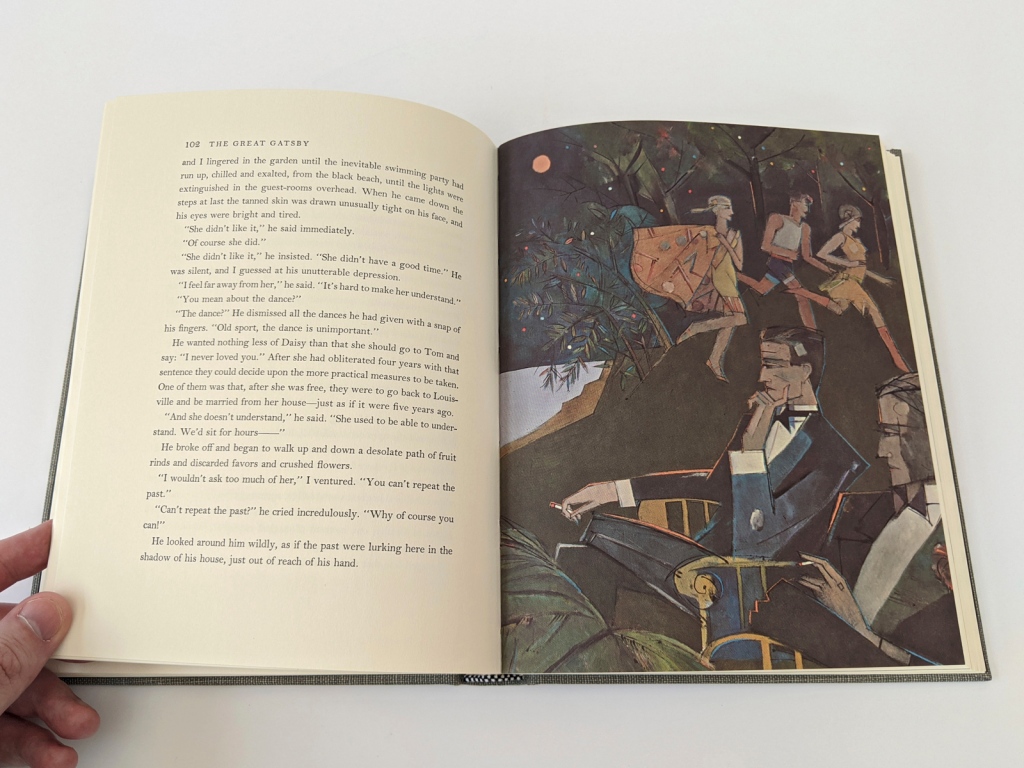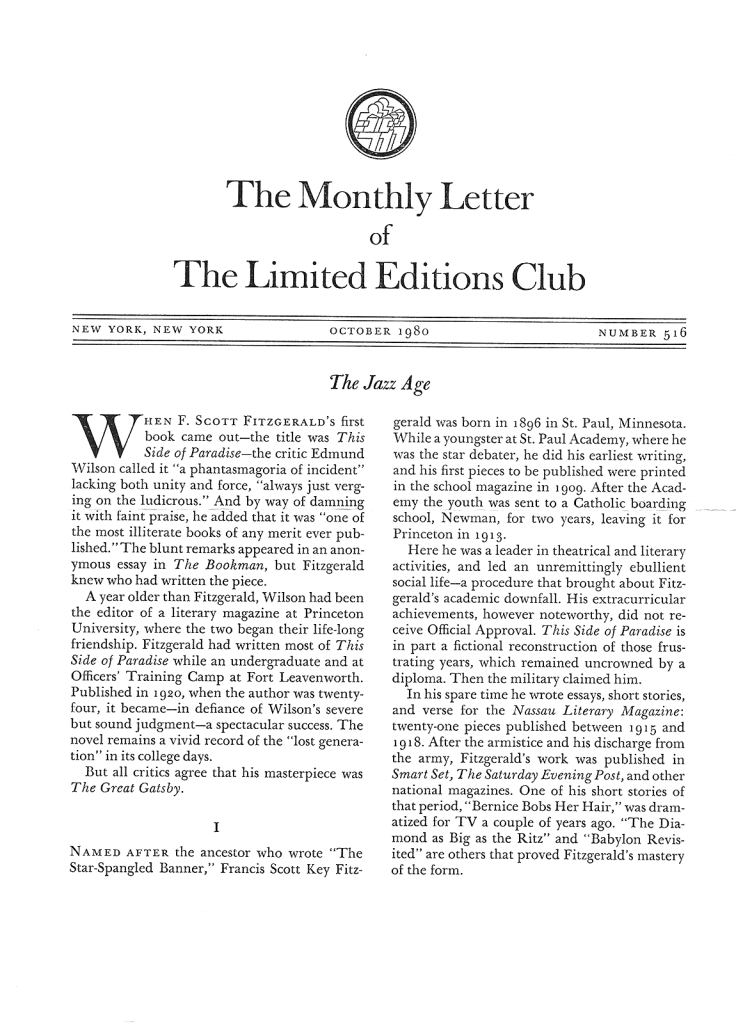Fitzgerald’s masterpiece of jazz age literature gets a fine edition, bold inside and out—just as its plot demands.
Limited Editions Club; 1980; xix, 171pp; 8to (230x180x30mm); 1kg; bound in stamped grey buckram; in plain black slipcase; limited to 2,000 copies; colour illustrations throughout; signed by the illustrator. This is LEC book number 508, part of the Forty-Fifth Series.
What is the Great American Novel? Does such a thing even exist? One candidate stands boldly out and screams emphatically “yes”, for few novels so completely capture the very essence of Americana as does F. Scott Fitzgerald’s masterpiece of uninhibited Jazz Age exuberance. This is, of course, the only, the inimitable, The Great Gatsby. The novel was first published in 1925 but I’ll be taking a look at the Limited Editions Club version of 1980, shortly after Sidney Shiff’s acquisition of the LEC.
The books comes in a simple black slipcase, blocked in silver on the spine with the title and the author’s name. Within, we find a modestly-sized volume of grey buckram, stamped with a design by Deborah M. Evetts. The subject of the design is a Rolls-Royce motor car, its distinctive front grille looming above two large silver headlamps. These densely printed silver discs catch the light like a pair of mirrors and appear positively luminescent. The illustration wraps-around onto the back board, which shows the vehicle’s front wing. If the cover is opened to ninety degrees one has the impression of looking at a three-dimensional drawing. This is a design at once clever and striking, and the overall effect is quite captivating.
The buckram has a fairly coarse texture, but its fibres have a smooth sheen to them and this feels like nice book to handle. That said, I’d advocate protecting the book in a protective Mylar dust jacket to avoid the risk of damage to that wonderful design. The spine of the volume is stamped with the title and author’s name, just like the slipcase, although the delicate silver lettering stands out less clearly against the grey cloth. The binding is sewn, with black and white head and tail bands, and the end papers are black.
The book is printed on bespoke white paper of a good weight with an “egg shell” finish. The text was set by Roderick D. Stinehour in 11pt Monotype Bell, with Bodoni display. The typographic design is simple, but all the more elegant for it. The generous leading also makes for a comfortable and relaxed reading experience. The printing is letterpress, which has resulted in excellent text clarity. Printing and binding took place in the United States, with all of the work being done at the Stinehour Press in Lunenberg, Vermont.
Opening the book, we are first presented with an introduction authored by Charles Scribner III. This is an unusual treat because Scribner is not only a well-qualified scholar of the arts, but also heir to the publishing dynasty that gave The Great Gatsby unto the world. Next we happen upon the text of the novel itself. Set in New York at the height of the Jazz Age, The Great Gatsby takes us on a dizzying tour into the world of Long Island’s well-heeled—old money and new. Our protagonist and narrator is the hapless Nick Carraway, but it’s his enigmatic neighbour, the eponymous Gatsby, that steal’s the show. What is Gatsby’s motive in befriending the young upstart next door? What is his secret? All is revealed in a plot whose tempo is every bit as frantic as the life of parties and debauchery it describes. Don’t be fooled by the modest page count, there’s a lot going on here and it’s one heck of a ride.

The book’s illustrations were painted in gouache by Fred Meyer and are printed on matte paper. There’s a generous offering of fourteen full-page images whose angular style and bold colours recall the edition’s 1980 publication date. Aptly, the 1980s, much like the “roaring” 20s, had a certain decadent spirit that is well captured here and fits the book’s subject matter very well indeed. The unusual style also serves to remind us that these are not mere rote illustrations, but carefully considered works of art in their own right.
The book ends with a colophon that identifies it as one among 2,000 copies printed and is signed by the illustrator. As usual for a Limited Editions Club offering, the book came with an announcement flyer and a member’s letter, which are reproduced below. ■
Where to buy
You can search for the Limited Editions Club’s The Great Gatsby on eBay US*, eBay UK*, AbeBooks US*, and AbeBooks UK*.
I acquired my copy from a Canadian independent bookshop for CAD$340.00 (around £200.00), including postage and packaging. From what I’ve seen, this appears to be at the lower end of normal secondary market prices, with prices often falling in the £200–£300 (US$250–$400) range.
* denotes an affiliate link
Notes on other editions
Besides the Limited Editions Club’s offering, anyone looking for a fine edition of The Great Gatsby has several choices before them.
- The Thornwillow Press has published a modern fine edition that, as of July 2020, is still available direct from the publisher in paper, half-cloth, and half-leather variants.
- The Folio Society has published this book on three occasions. A 1968 edition is bound in yellow cloth with a line work design of an antique motorcar on the cover (a striking parallel to the LEC’s design). A 2005 edition had a blue, black and silver binding design and was issued in series with Fitzgerald’s other novels. Thirdly, a 2013 offering came in a purple and pink design with an art deco cover illustration. You can search for Folio Society editions of The Great Gatsby on eBay US*, eBay UK*, AbeBooks US*, and AbeBooks UK*.
- It’s a niche option, but S. P. Books publishes a nice-looking facsimile of Fitzgerald’s original, handwritten manuscript for The Great Gatsby. As of July 2020, it is still available direct from the publisher.
- Arion Press published a limited edition in 1984 with illustrations by famed architect Micahel Graves.
Other links
- Book Porn Club also has an article about the Limited Editions Club’s The Great Gatsby, with photographs of all of the book’s fourteen illustrations.
- Books and Vines has an article looking at both the Limited Editions Club and Arion Press versions of the book.
- You can find some discussions of the merits of various fine editions at the Fine Books LibraryThing group, where there is also a post focusing more on the Thornwillow edition.
- The Whole Book Experience has a write-up on the Thornwillow edition.



